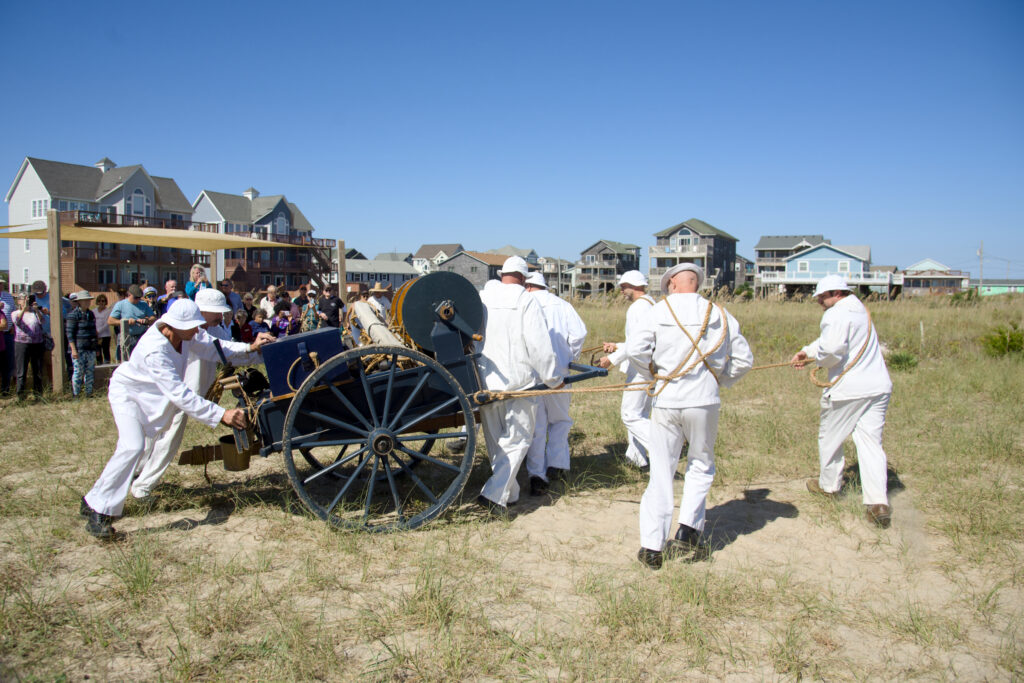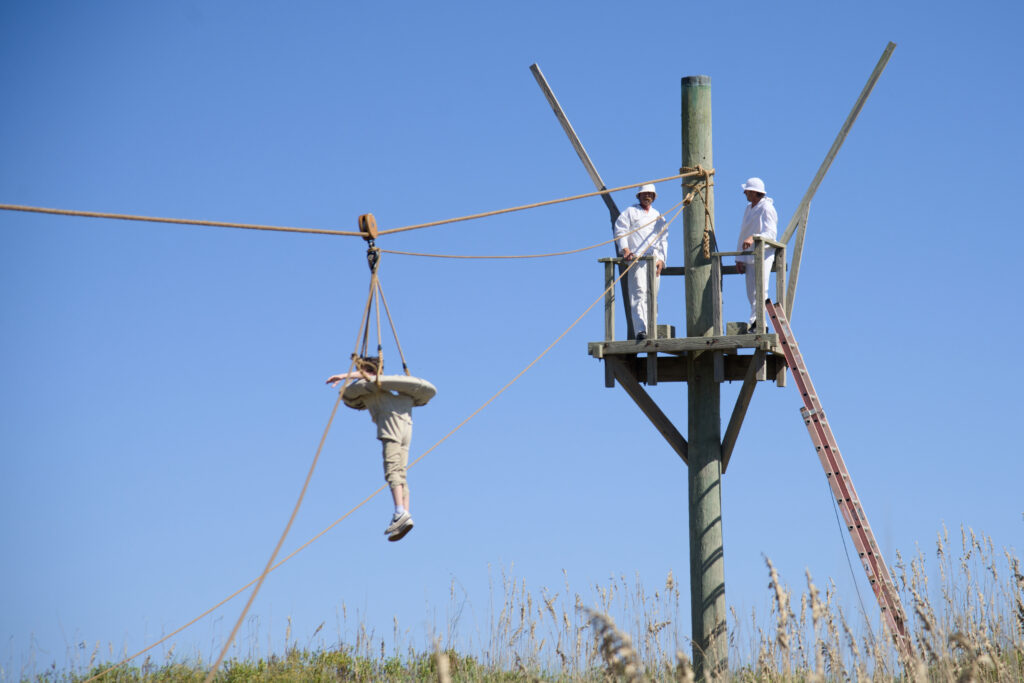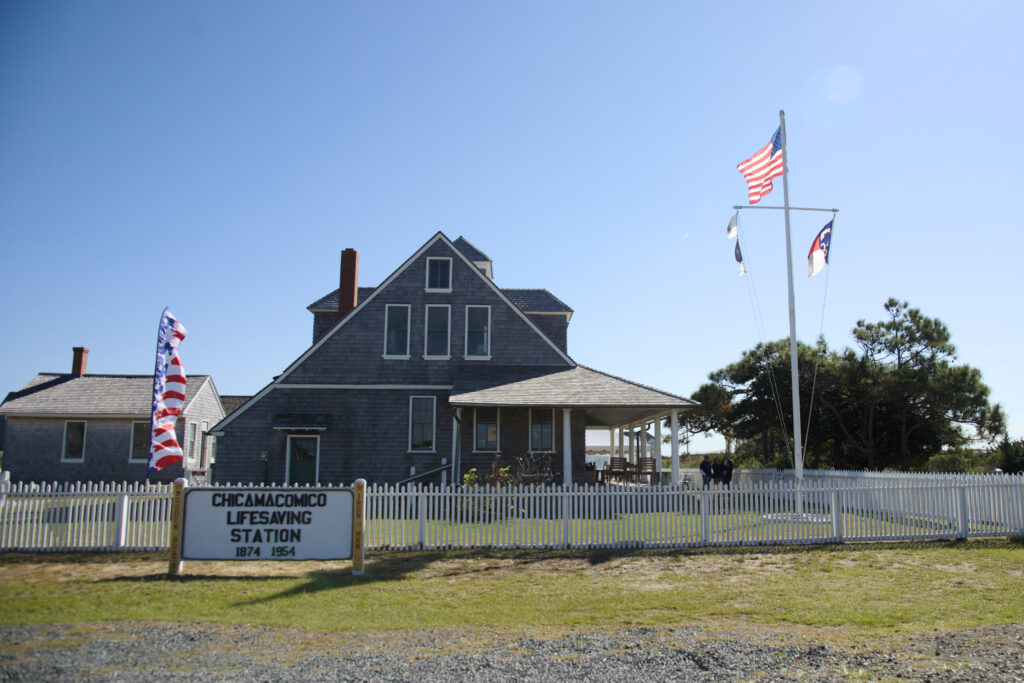The Chicamacomico Life-Saving Station in Rodanthe celebrated its 150th anniversary. The celebration included speeches and the firing of a Lyle Gun, which was the linchpin of sea rescues for more than 75 years. That demonstration probably did more to explain how the Lyle Gun saved lives than any words could ever describe.
Designed by US Army Lt. David Lyle in 1877 to send a line to a ship in distress, the gun was used by the Life-Saving Service and then the Coast Guard until 1952.

The firing of a Lyle Gun is a remarkable spectacle, and in the summer, when the demonstrations are more regular, it’s a great item for the to-do list.

A shotline is attached to a wrought iron projectile and in the practice run, the line is shot to a mast about 200 yards downrange. The line is pulled taut and anchored, and a breeches buoy is sent to the mast and returns with the rescued mariner.

In fair weather with a light breeze, hitting the mark is easy. It would have been unimaginably difficult in a howling gale with a ship breaking apart 400 yards offshore to accurately fire the line, and yet it was done time and time again.
The station is the best preserved on the Outer Banks and probably one of the best preserved in the country. Managed by the Chicamacomico Historical Association, it has activities scheduled year-round.
The historical significance of Chicamacomico is considerable.
When the Chicamacomico Life-Saving Station opened its doors in 1874, there was no US Life-Saving Service (USLSS), the direct predecessor to the Coast Guard. The USLSS was created in 1878 and then merged with the Revenue Service in 1915 to form what is now the US Coast Guard.
But at that time, in 1874, the lifesaving duties along the coast of the United States were handled by the Revenue Marine Division of the US Treasury. That division of the Treasury Department was undergoing a rapid—even radical, it’s safe to say—change.
For years, the few lifesaving stations along the coast were the dumping ground of political hacks. The equipment was poorly maintained and frequently useless. Crews were incompetently trained—if they had any training at all—and physically unable to fulfill their duties.

“Training and equipment were either poor or non-existent, and many of its ‘lifesavers’ were either incompetent land-lubbers or corrupt political appointees,” is how the Cape Hatteras National Seashore described conditions in the history of the USLSS.
In 1871, everything changed when Sumner Kimball was appointed the chief of the Treasury Department’s Revenue Marine Division.
A native of Maine, Kimball had spent ten years as a lawyer in the Treasury Department before his appointment, and he got to work right away.
“Using his hard-earned political know-how and a good dose of Yankee common sense, Kimball proceeded to completely overhaul…the hodge-podge system of lifesaving stations along the nation’s coast that were also under the control of the Revenue Marine Division,” the Coast Guard’s historian office observed.
He eliminated the political hacks, insisted on crew training, and pestered Congress into allocating funds for new equipment. He also advocated for better pay for the crews manning the stations, noting in his 1873 report to Congress that “The rate was fixed at $200 per annum (Station Keeper or supervisor) in 1854, and has never been increased. If it was not too much then, it is certainly too little now.”
Kimball had also managed to get Congress to allocate funds for new Life-Saving stations with considerable emphasis on the Outer Banks where seven new stations—Jone’s Hill (Currituck Beach), Caffey’s Inlet, Kitty Hawk, Nags Head, Bodie Island, Chicamacomico and Little Kinnakeet.
All seven stations opened in 1874, but Chicamacomico was the first. Although the location has moved over the years, the building is remarkably intact.
“Although the complex was relocated from its original site and remodeled several times, it remains one of the most complete and best preserved of these early stations,” the Society of Architectural Historians notes in describing the site.
The station was decommissioned in 1954, but during its 80 year history, crews of the Chicamacomico Station were involved in a number of heroic actions, perhaps none as famous as the rescue of the crew of the British oil tanker Mirlo after a German U-boat torpedoed it on August 16, 1918.

Forty-two of the 52 crewmen on board were saved that day through the remarkable and heroic efforts of the Coast Guardsmen on duty that day. For their efforts, the Coast Guard awarded each member of the launch the Gold Lifesaving Medal of Honor—the service’s highest honor.
